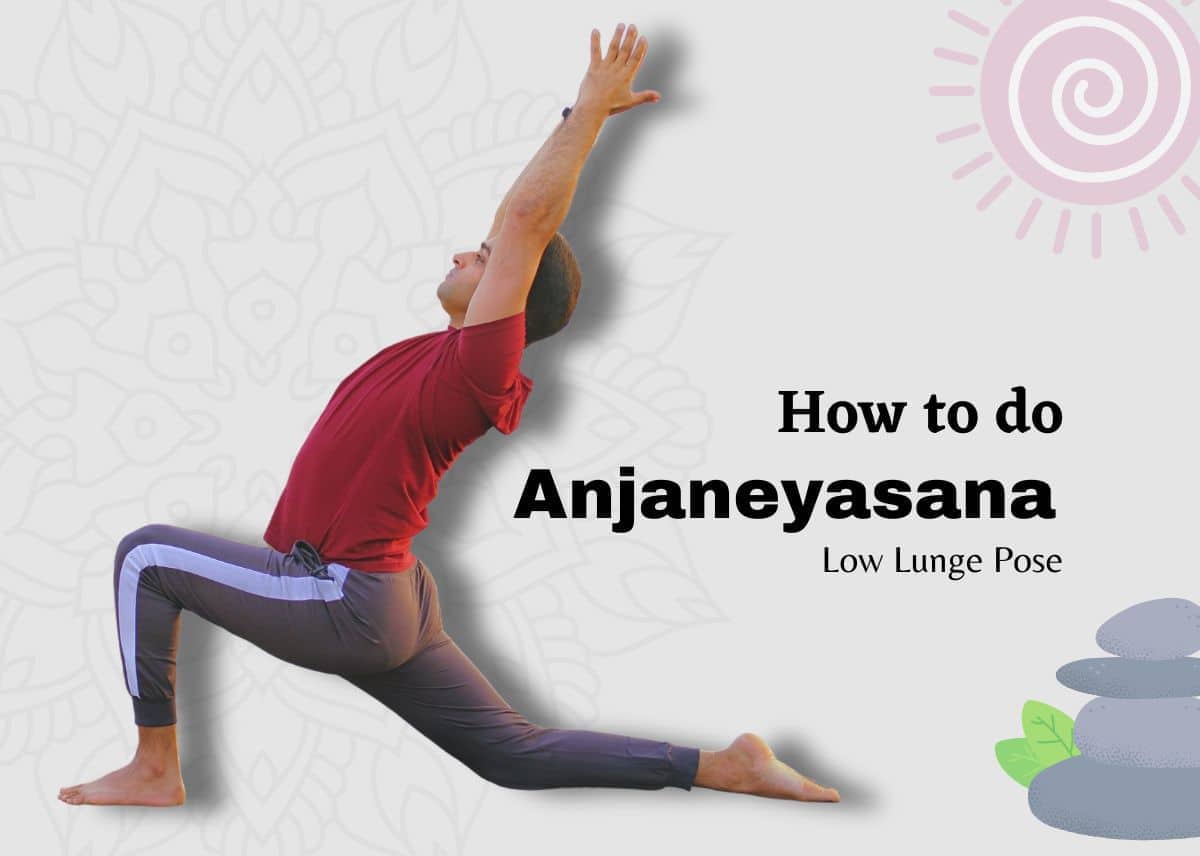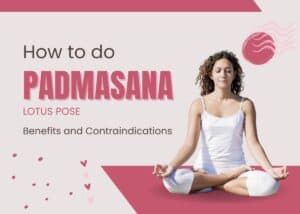How to do Anjaneyasana (Low Lunge Pose)? Anjaneyasana, also known as the Low Lunge Pose, is a fundamental yoga asana that offers a range of physical and mental benefits.
This pose stretches and strengthens various parts of the body while promoting balance and stability.
In this article, we will explore the steps to perform Anjaneyasana, its benefits for the mind and body, and important contraindications to keep in mind.
Table of Contents
Steps to Perform Anjaneyasana (Low Lunge Pose)
- Start in a standing position at the top of your mat, with your feet hip-width apart and arms at your sides.
- Step your right foot forward into a lunge position, keeping the knee directly above the ankle. Lower your left knee to the mat.
- Gently slide your left foot back, extending it behind you with the toes resting on the mat.
- As you inhale, lift your torso and raise your arms overhead, reaching toward the sky. Keep your shoulders relaxed and away from the ears.
- Engage your core muscles and lengthen your spine, while maintaining a steady breathing rhythm.
- To deepen the stretch, gently sink your hips forward and down, feeling a stretch in the front of your left hip and thigh.
- Hold the pose for 30 seconds to 1 minute, focusing on your breath and maintaining stability.
- To release the pose, exhale and lower your hands to the mat, framing your front foot. Step back with your right foot and return to the starting position. Repeat on the other side.
Benefits of Anjaneyasana:
- Stretches hip flexors: Anjaneyasana deeply stretches the hip flexor muscles, improving flexibility and reducing tightness in the hips.
- Opens the chest and shoulders: The pose expands the chest and shoulders, promoting better posture and relieving tension in these areas.
- Strengthens the legs: The low lunge pose strengthens the quadriceps, hamstrings, and gluteal muscles, enhancing leg stability and overall lower body strength.
- Improves balance and core stability: By engaging the core muscles and finding balance in the pose, Anjaneyasana enhances stability and body awareness.
- Enhances focus and concentration: The combination of mindful breathing and focused attention in this pose can help calm the mind, improve concentration, and reduce stress.
- Stimulates digestion: Anjaneyasana can stimulate the abdominal organs, promoting healthy digestion and alleviating digestive issues.
Contraindications and Precautions:
While Anjaneyasana is generally safe for most individuals, it is important to be aware of the following contraindications and precautions:
- Knee injuries or instability: If you have knee injuries or pain, modify the pose by using props or avoid it altogether.
- High blood pressure: Individuals with high blood pressure should avoid raising their arms overhead during the pose. Keep the hands on the hips or rest them on the front knee.
- Lower back or neck injuries: If you have lower back or neck injuries, practice the pose with caution or consult a qualified yoga instructor for modifications.
- Pregnancy: Pregnant women should avoid deep backbends and should modify the pose by keeping the back knee lifted or placing a bolster under the hips for support.
Conclusion
Anjaneyasana, or the Low Lunge Pose, is a beneficial yoga asana that offers a variety of physical and mental advantages. By practicing this pose with proper alignment and mindfulness, you can experience improved flexibility, strength, balance, and mental focus. However, it’s crucial to respect your body’s limitations and consider consulting a doctor in case you have serious health concerns before practicing this pose.
Also See:







